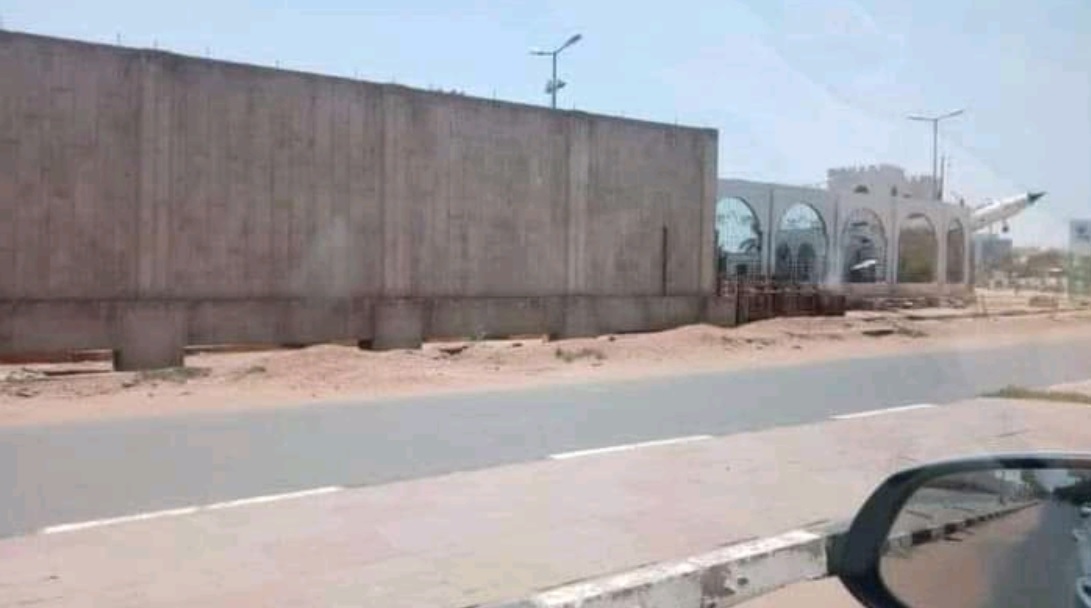
About the Strategic Vision of the Burhan Leadership...!
Abdullah Rizq Abu Simazah
General Abdel Fattah al-Burhan spoke cryptically about the militarys handling of its transition from the smaller basement to the larger basement. (The capital, Khartoum, has become nothing more than a large basement surrounded by friendly and hostile fires from all directions, just four months after the war). However, the general did not answer how he found the situation there, or rather, how he left it.
This concerns the wall that may bear the name Burhan Wall in the coming days, with the security dimensions it adds, including the Ministry of Defenses towers, including the General Command of the Armed Forces. The wall invites comparison when it reflects the contrast in the aesthetic perspective of military architecture between two generals.
While Abdel Rahim Mohammed Hussein was concerned with the aesthetic aspect of the external appearance of the leadership, including the wall, to reveal the era of prosperity resulting from oil revenues, the first gold mines, and humanitarian aid supplies (the latter is considered by the French researcher Marc Lavergne to be one of the sources of prosperity that unexpectedly struck Khartoum), Burhan was more concerned with the functional aspect of the wall. In the future, newspapers may write, perhaps with some surprise, that this architectural feature was not built to deter an external enemy, as is the case with the Nile-facing barricade, despite the questions it raises about the strategic vision of the Mahdist leaders regarding the role that the barricade could play in repelling the English invasion coming from the Kurdufan mountains.
The wall, designed to create a sense of separation between the armed forces and the people to which they belong, symbolizes the rift between General Abdel Fattah al-Burhan on one hand and the mass movement that sparked the December 2018 revolution, which reached its peak in the massacre or what some of the honorable military men referred to as the stain on leadership, on the other hand.
The construction of this inspired wall, perhaps, dates back to regional and global experiences during the era of harmony between Burhan and his deputy, General Mohammed Hamdan Dagalo, known as Hemeti, stemming from the alleged blood ties between the Rapid Support Forces and the armed forces.
Despite the clarity of the relationship between the military leadership and the people in its tactical and strategic dimensions, as indicated by the wall, this clear vision is almost absent or dwindles when it comes to the relationship between military leaders. There seems to be a lack of strategic vision in assessing threats, their sources, and the ability of the Burhan leadership to anticipate a collision with the Rapid Support Forces through concrete arrangements, such as more innovative walls or barricades, which left it exposed on the morning of April 15, and the rest is history.
There were no defense technologies other than the wall erected to stop the youth of the December Revolution when they attempted to return to the sit-in in front of the leadership, seek protection from the army against the remnants, or persuade it to support the revolution. This argument was borrowed from the experience of the October 1964 revolution and the April 1985 uprising.
It seems that the primary contradiction in the awareness of the Burhan leadership lies with the rebellious people and others are secondary. However, this assessment does not rule out the possibility of the secondary contradiction becoming primary at some point.
Nevertheless, the decline in the strategic vision of the leadership, in its most prominent and extreme forms, lies in its belated and unexpected discovery that the forces that it sought to empower at one point in time are nothing more than rogue militias composed of thousands of foreigners and... and...

